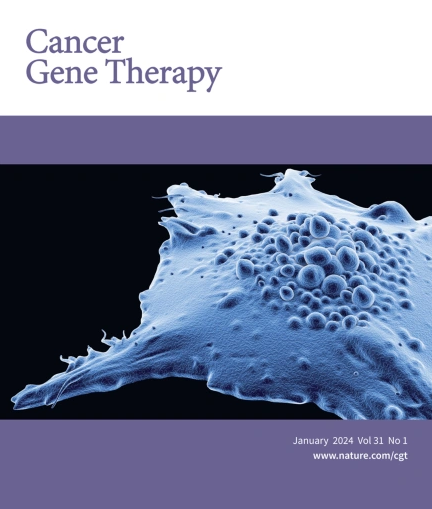受TOP2A调控的Pin1过表达,随后稳定Pyk2,从而促进多发性骨髓瘤的硼替佐米耐药性。
IF 5
3区 医学
Q1 BIOTECHNOLOGY & APPLIED MICROBIOLOGY
引用次数: 0
摘要
多发性骨髓瘤(MM)是一种浆细胞血液恶性肿瘤,由于耐药性和疾病复发,该病在很大程度上仍无法治愈,这就需要新的治疗靶点和治疗方法。肽基脯氨酰顺式/反式异构酶NIMA-interacting 1(Pin1)是一种与多种肿瘤发生有关的肿瘤蛋白。然而,Pin1 过表达在调节 MM 生物学方面的功能性后果尚未确定。在本研究中,我们发现 Pin1 在骨髓瘤细胞系和原发性 MM 中的表达变化很大,而且 Pin1 的高表达与 MM 患者的不良生存率有关。接着,我们发现 TOP2A 是 Pin1 启动子结合蛋白,CK2 可激活 TOP2A 以促进 Pin1 的表达水平。此外,我们还证明了 Pin1 能积极调节 Pyk2 的稳定性和功能,从而增强 MM 的硼替佐米耐药性。Pin1通过其WW结构域识别Pyk2中的三个磷酸化Ser/Thr-Pro基团,并通过抑制Pyk2的泛素化和蛋白酶体降解,以异构酶活性依赖的方式提高Pyk2的细胞水平。此外,Pin1抑制与Pyk2抑制相结合可降低骨髓瘤的体内外负担。总之,我们的研究结果揭示了Pin1在骨髓瘤中的促瘤作用,并为靶向Pin1可能成为骨髓瘤的治疗策略提供了证据。本文章由计算机程序翻译,如有差异,请以英文原文为准。

Overexpression of Pin1 regulated by TOP2A, which subsequently stabilizes Pyk2 to promote bortezomib resistance in multiple myeloma
Multiple myeloma (MM), a hematological malignancy of plasma cells, has remained largely incurable owing to drug resistance and disease relapse, which requires novel therapeutic targets and treatment approaches. Peptidyl-prolyl cis/trans isomerase NIMA-interacting 1 (Pin1) acts as an oncoprotein linked to the development of various tumors. However, the functional consequence of Pin1 overexpression in modulating MM biology has not been established. In the present study, we show that Pin1 expression is highly variable in myeloma cell lines and primary MMs and that high Pin1 expression is associated with poor survival of MM patients. Next, TOP2A is identified to be a Pin1 promoter-binding protein and CK2 activates TOP2A to promote the expression level of Pin1. Additionally, we demonstrate that Pin1 positively modulates the stability and function of Pyk2 to enhance bortezomib resistance in MM. Pin1 recognizes three phosphorylated Ser/Thr-Pro motifs in Pyk2 via its WW domain and increases the cellular levels of Pyk2 in an isomerase activity-dependent manner by inhibiting the ubiquitination and proteasomal degradation of Pyk2. Moreover, Pin1 inhibition combined with Pyk2 inhibition decreases myeloma burden both in vitro and in vivo. Altogether, our findings reveal the tumor-promoting role of Pin1 in MM and provide evidence that targeting Pin1 could be a therapeutic strategy for MM.
求助全文
通过发布文献求助,成功后即可免费获取论文全文。
去求助
来源期刊

Cancer gene therapy
医学-生物工程与应用微生物
CiteScore
10.20
自引率
0.00%
发文量
150
审稿时长
4-8 weeks
期刊介绍:
Cancer Gene Therapy is the essential gene and cellular therapy resource for cancer researchers and clinicians, keeping readers up to date with the latest developments in gene and cellular therapies for cancer. The journal publishes original laboratory and clinical research papers, case reports and review articles. Publication topics include RNAi approaches, drug resistance, hematopoietic progenitor cell gene transfer, cancer stem cells, cellular therapies, homologous recombination, ribozyme technology, antisense technology, tumor immunotherapy and tumor suppressors, translational research, cancer therapy, gene delivery systems (viral and non-viral), anti-gene therapy (antisense, siRNA & ribozymes), apoptosis; mechanisms and therapies, vaccine development, immunology and immunotherapy, DNA synthesis and repair.
Cancer Gene Therapy publishes the results of laboratory investigations, preclinical studies, and clinical trials in the field of gene transfer/gene therapy and cellular therapies as applied to cancer research. Types of articles published include original research articles; case reports; brief communications; review articles in the main fields of drug resistance/sensitivity, gene therapy, cellular therapy, tumor suppressor and anti-oncogene therapy, cytokine/tumor immunotherapy, etc.; industry perspectives; and letters to the editor.
 求助内容:
求助内容: 应助结果提醒方式:
应助结果提醒方式:


